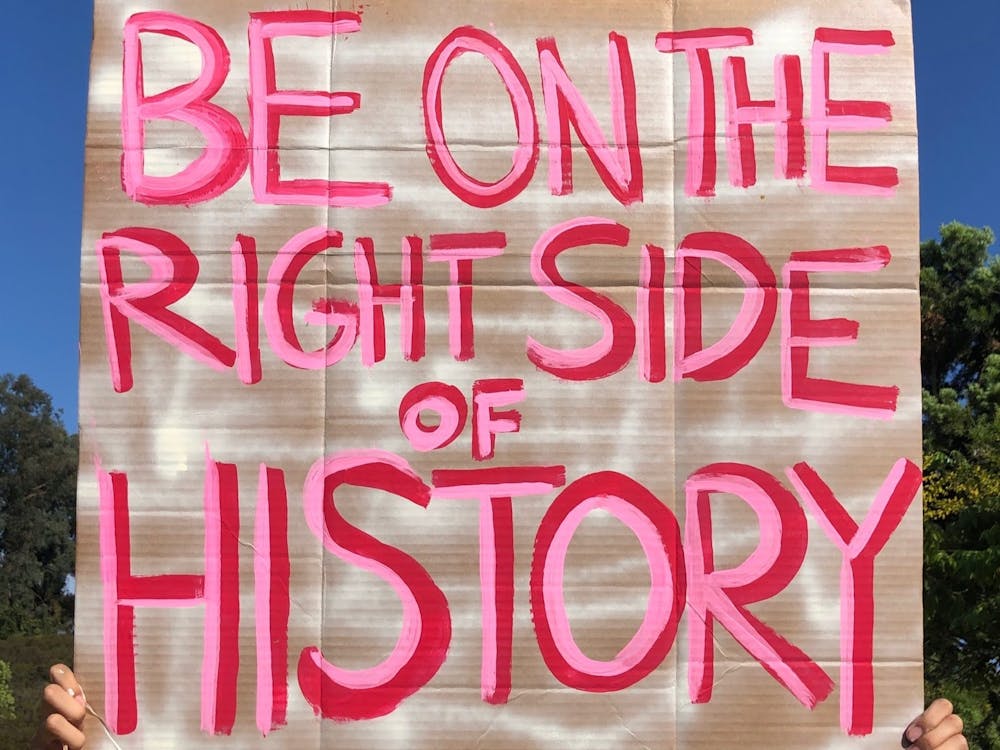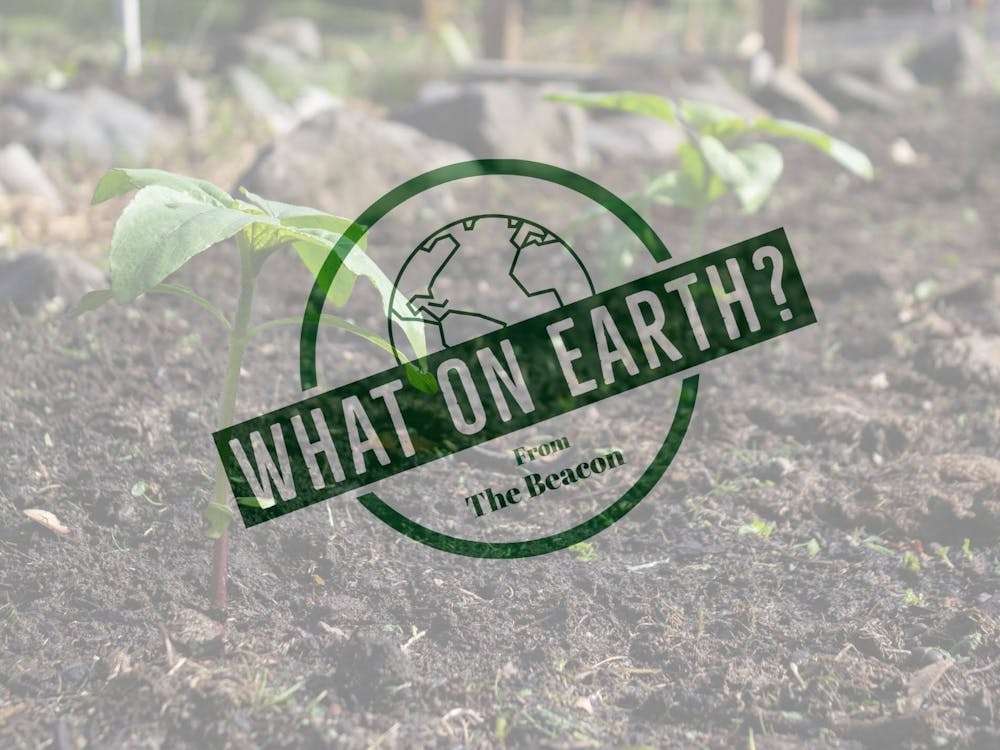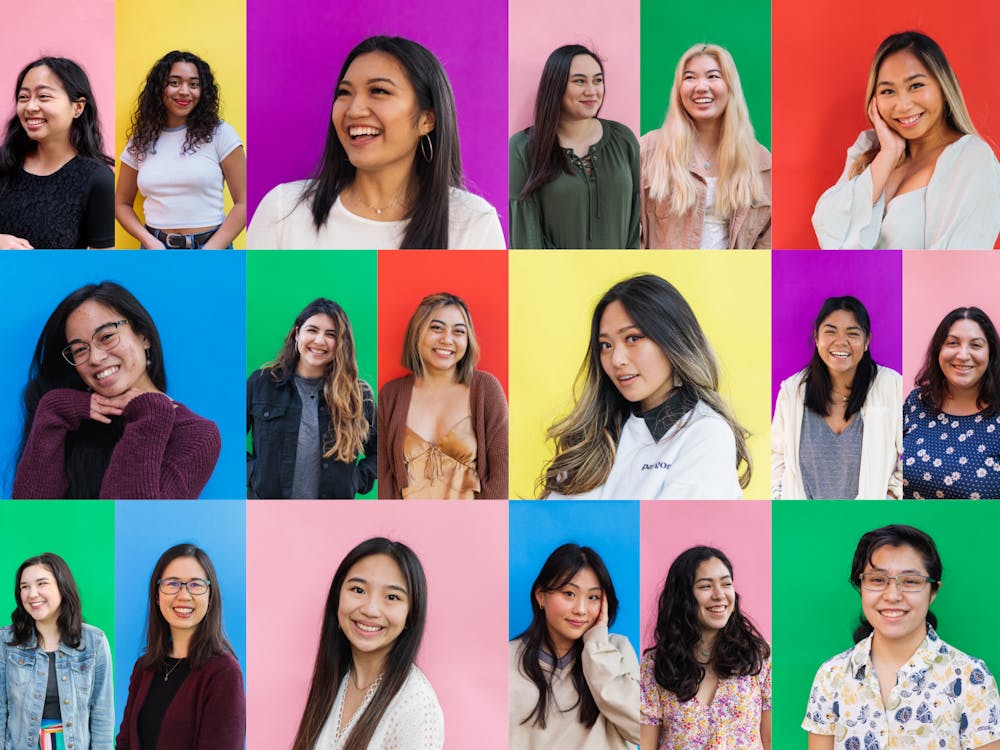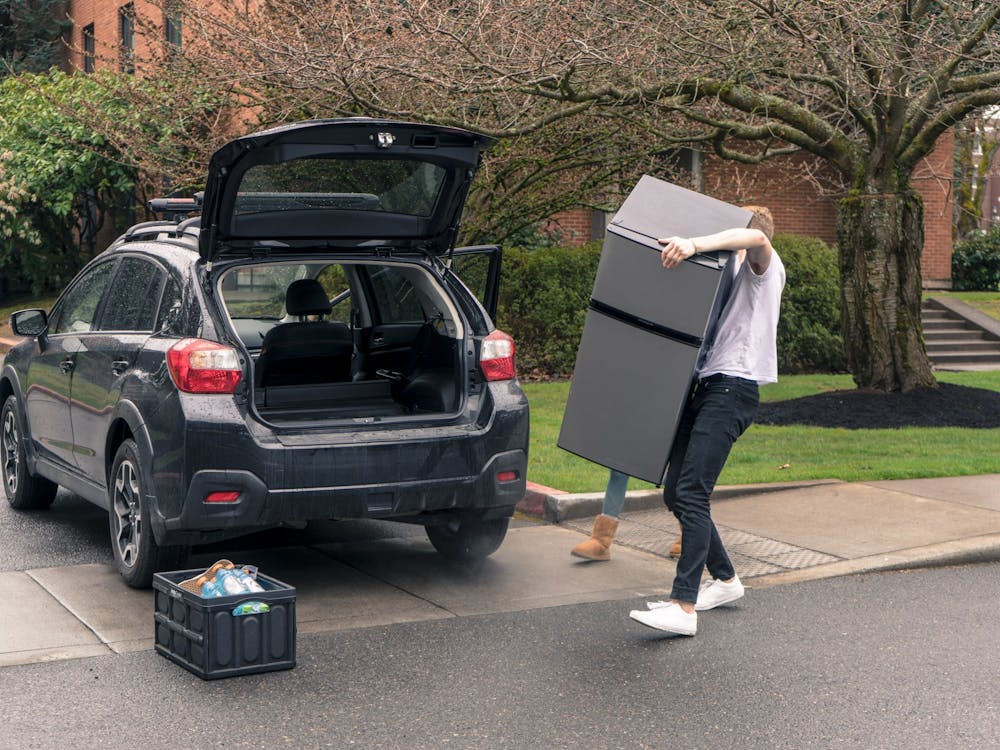Black Lives Matter has Americans from all walks of life uniting as one group to protest police brutality and systemic racism. Some UP students and alumni can be found in these groups marching on the streets and crying out for justice. Here are five of their stories.
Tim Haarman, Junior
Hometown: Tigard, OR
Major: Political Science
Tim Haarman took part in about a dozen protests in downtown Portland this summer. He decided to go with friends after watching the news about George Floyd’s death at the hands of police.
Haarman had never protested before, and it was life-changing.
“It's not like on the news,” Haarman said. “It was a very weird feeling but I just felt very connected to all the other people that were down there. We were all down there for a shared purpose and shared cause going up against this pretty hyper-militarized force.”
Haarman grew up in Tigard, Oregon, a mostly white and peaceful suburban community. His interactions with police had been inconsequential, being at Boy Scout meetings or bike safety events. After hearing speakers at protests talk about their volatile experiences with police, he recognized that this was not how BIPOC (Black, Indigenous, and People of Color) communities experience police encounters.
He also learned more about the history of systemic racism in the U.S. and realized he wasn’t the only one who was never educated about it.
“I'm 21,” Haarman said. “So I've got 21 years of built-up, kind of, false narratives about America and about Portland, and about blackness at large. So, I would start by recognizing that your older relatives, the older they are, the more years of misinformation they have. Imagine your grandparents who went to grade school within the 40’s, 50’s, or 60s, you know, what were they taught in a nation that still legalized segregation?”
On the last Saturday of July, Haarman became more frightened than he had ever been at other protests. As he and other protesters confronted federal agents dispatched by President Trump in front of the federal courthouse, officers started to throw tear gas canisters indiscriminately into the crowd.
He felt those agents didn’t care if one of the canisters injured people, and said he’ll never forget it.
“They were dropping tear gas canisters from up there, and I remember in 2019 seeing news headlines, basically saying that the UN was decrying the Chinese Communist Party's use of tear gas from height in Hong Kong,” Haarman said.“And so that was kind of an ‘Oh shit!’ moment for me. I really watched an internationally recognized war crime happen in the city that I grew up in.”
While his first experience being tear-gassed and getting hit with pepper balls scared him, Haarman continued to protest and adapt.
“Every time that happened, I got a little more comfortable, a little less afraid of it, and it became more of a tactical thing of like, ‘oh there’s some gas, we're going to go a block over and then we'll come back,’” Haarman said. “So you definitely get desensitized to it.”
Haarman’s hope in demonstrating was to push his own prejudices aside and re-educate himself after having a built up sense of a false narrative around Blackness and encounters with police.
“I was kind of angry,” Haarman said. “I was over it. I was frustrated that I inherited these prejudices from others and I wanted to do something about it.”
Initially he believed his end goal was police reform and reallocation of resources. However, the more he observed how police treat protesters, the more he understood the movement to abolish police.
“I think what I came to realize,” Haarman said, “is that police are not very good at their jobs and they kind of function as an arm of racial control in a lot of instances. So those were my two big reasons being out there with an end goal of Police Abolition.”
Maddie Nguyen, 2020 Alumna
Hometown: Corona, CA
Major: Theater
Maddie Nguyen and her friends went to downtown Portland protests at least once a week this summer, from late May up until the fires in Oregon erupted. Like Haarman, she noticed that her observation and new encounters with police while protesting have strengthened her stance on police abolition.
“Not in a bad way, but I do think it has radicalized me in a way, going out and seeing the violence and aggression from police on a consistent basis,” Nguyen said.
Nguyen said that protesting has traumatized her to the point that when fireworks go off outside her apartment she asks her roommate if it was a flashbang. Occasionally when she hears a police siren, she begins to shake. Nguyen advises to keep the discourse of why protesting is important alive while keeping the groups limits in mind.
“It is traumatic,” Nguyen said, “and I think we've learned to respect each other's boundaries and recognize and honor each other's trauma and what we're bringing to it on a nightly basis, and then just also understanding why we're there.”
The more that Nguyen and her group were exposed to the reality of police and their relationship with BIPOC communities, the more they wanted to get involved. They learned how to adapt to unprecedented situations while protesting.
“It didn't feel like it at the time, but the Portland Police are a lot worse than the Feds in terms of brutality,” Nguyen said. “After a while, it just became like a nightly thing. The Feds stayed behind their little fence and tossed things but we adapted and learned how to, you know, deal with it. The Portland Police just beat the shit out of you.”
Even though she was exposed to a lot of harsh realities, like getting shot in the rib cage with a rubber bullet and being knocked over by the Portland Police Bureau's Bull Rush tactic, she was also exposed to the reliable community that came along with protesting following the immediate response she was given after being shot.
“Immediately when that happened, someone with a shield ran in front of me and my friends grabbed me, or pulled me away, and a medic came and was like ‘Can I help? Can I help you?’” Nguyen said.
Even though the protests can feel and look like a battlefield, Nguyen expresses how safe she felt with the people that she was surrounded with.
“If you say in a crowd ‘Does anyone have water?’ five people will pull water out of their backpack to give it to you,” Nguyen said. “If you're hungry, people will be like, ‘I got food! I got food!’ It's incredible, and I think that's building into a larger movement that will probably last beyond the protest itself, this idea of mutual aid and what it means to care about other human beings while also honoring their intersectionality.”
A misconception often tossed around about protestors that Nguyen has faced herself is the idea that they are hooligans who want to start trouble or they don't have anything better to do with their lives. She points out that protesting is what the constitution preaches to do when the government isn’t upholding its promise to look out for its citizens best interest.
“The Constitution says if you feel like your government isn't listening to you, if your government is not living up to the ideals that it espouses, if your government is not protecting you, you have a duty, the Constitution says, to oppose that.” Nguyen said.
Ananya Rao, Sophomore
Hometown: San Diego, California
Major: Biology
Ananya Rao has been to about seven protests this summer and witnessed what change can come from standing up for what she believes in.
After protesting within a caravan in her own neighborhood about racial injustices within her old high school, the principal agreed to meet with one of the protest organizers to talk about what changes could be enforced when it comes to required classes and policies about zero tolerance racism.
This gave Rao hope that more progress could come from people banding together and fighting for a shared cause.
The largest protests Rao attended were in honor of Vanessa Guillen and Breonna Taylor. According to Rao, speakers focused on how uninvolved or uninterested the police can be when issues don’t affect the communities they are associated with.
“There was a girl that I remember, she told us about her experiences dealing with the police throughout her entire life...every experience was negative and that they [the police] weren’t really there for her when she needed them,” Rao said.
Rao believes that the main goal of protesting should be educating yourself and giving attention to Black voices and experiences to better understand the Black Lives Matter movement and what it means to be an ally to the cause.
“...as an ally, you want to be loud in your support...but you also want to make sure that you're not overshadowing their voices, because they're the ones that need to be heard, they're the ones that you need to listen to,” Rao said.
Rebecca Cole, Senior
Hometown: San Francisco, CA
Majors: Biology and Spanish
Rebecca Cole has participated in two Black Lives Matter protests, and after being able to navigate conversations about the movement with her family, she brought her mom to the first one.
“Some of the most important activism that you can do is talking to your parents about why this is a problem and why people are protesting, if they don't agree with it,” Cole said. “As family, you have some of the most power to influence the way these people think and feel.”
At the protest both Cole and her mom participated in, they stood still with other protesters in front of City Hall in San Francisco. Speakers led moments of silence for the families affected by police brutality, as well as spoke out on current events.
“I've had some really wonderful conversations with my mom, and she's way more open now to these new ideas than she was before,” Cole said. “And I'm not saying that just because of me but I think that the combination of us talking about it and her seeing things happening has really helped her process a lot of these things.”
Safety has often been the topic of conversation while protesting during a pandemic. Precautions may vary from protest to protest, but Cole felt that the highest priority was keeping everyone safe and healthy at both protests she attended.
“This year in particular, I think there's been a lot of conversation about COVID-19 and the danger of exposing people to the virus while being in these huge groups, but in my experience, the two that I went to, the highest priority it felt like was making sure that people were safe,” Cole said. “The people that were running both of them were handing out masks and really making sure people were keeping their distance.”
Cole made the decision to go out and protest after signing petitions and feeling like there was more that she could be doing. She feels a strong connection to her city, and after seeing the Mayor show up to the first protest she went to with her mom, she hopes that more people in power will recognize that this is what their citizens want to see.
“I had been to protests in the past for other things and I just always feel good being there because there's such a great sense of community and it reminds me of why the mission is so important,” Cole said.
She urges people to show solidarity with a cause that they care about and protest with respect to people's health concerns and own boundaries that they set when going out.
“You don't have to be at the front lines,” Cole said. “You don't have to engage in anything that you don't want to, if only to just put your body in a place with a bunch of other people and be like ‘Yeah, this is something that I'm standing up for’ feels like a very tangible way to engage with things that you care about.”
CJ Cabungcal, Junior
Hometown: Walnut Creek, CA
Major: Marketing
After a family in her hometown faced police brutality first hand, CJ Cabungal decided to attend the protests.
She rallied and marched in the streets in honor of Miles Hall. There she experienced one of the biggest misconceptions about protesting: how the media covers it.
Cabungcal said that while observing protesters marching underneath the heat of the sun to block incoming traffic on the freeway, she saw a police officer shoot into a civilian’s car. But she later saw that her local news outlets covered the story as protestors breaking into cars.
Cabungcal said that one way students can combat misleading news coverage is by looking at social media posts on what protesters experienced.
“I definitely think that social media gets a bad reputation in terms of quality control,” Cabungcal said, “but especially for things like this [the BLM protests]...just try to avoid the news.”
Cabungcal realizes that protesting might not be for everyone, but reminds others to look for other ways to help the cause even if it’s just getting involved in social media discussions with local officials or protest organizers.
“I think it is almost irresponsible at this point particularly for people to continue to be silent,” Cabungcal said. “I think that if you aren't comfortable with going to protests, the least that you could do is educate yourself and work to fight against your own biases and peoples’ in your own families.”
There are many different ways people can try to get involved. For example, Cabungcal tries to donate monthly to the Miles Hall foundation. She also knows that some of her friends have started to do graphic design for other organizers. She said in the long run, people could also get involved with campaign managing for local officials.
She feels that students and faculty at UP who choose not to protest could still get involved simply through educating themselves about issues of racial inequality, not only in this country, but in the UP community as well. Cabungcal believes these problems need to be addressed when they happen, and not just when it’s convenient to address them.
Cabungcal realizes that there is a need for a more inclusive and welcoming community at UP, which includes a wider demographic portrayed in faculty and staff.
“It is quite uncomfortable in the classroom to be taught specifically about racism or a lot of other issues like that, by someone who doesn’t necessarily experience it,” Cabungcal said. “I think they come with good intentions ... but it doesn’t really sit right with me to not have a space to talk about that stuff, and I suppose I feel like increasing diversity in faculty populations would probably help with that.”
Brienna Haro is a reporter for The Beacon. She can be reached at haro23@up.edu.








